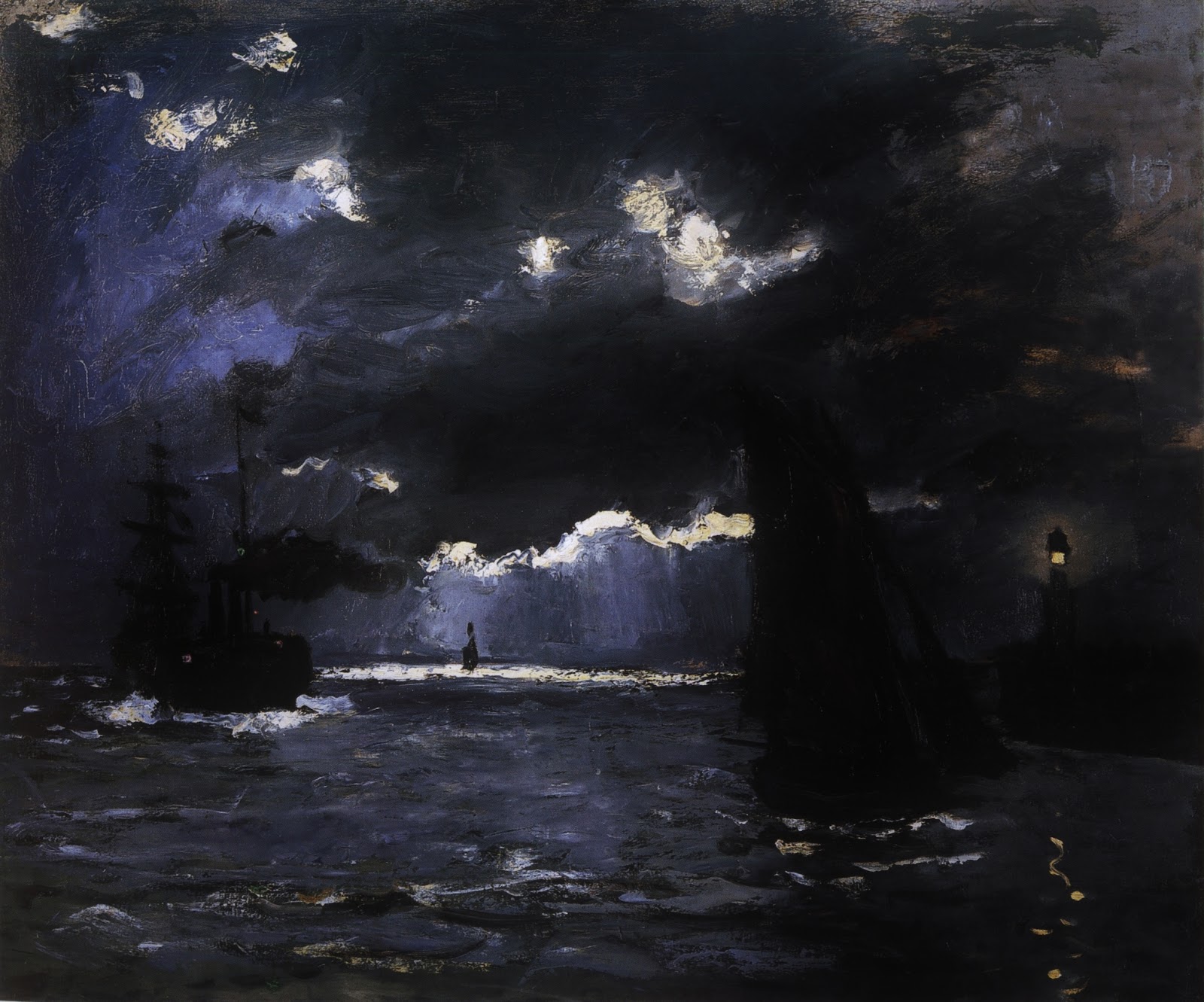His most famous painting is Le Moulin de la Galette. Here is the quintessential image of
the observer of Modern life. It shows a
group of young people on an outdoor dance hall in Paris in the afternoon. We have to see this as the new face of art in
the Modern Age. No longer focusing on
subjects from the Classical past, this work of art is all about depicting the
contemporary world. As Baudelaire had
expressed, the painter of Modern life would have to now turn his focus to the
crowds, the metropolitan social circles, to rummage for whatever humanity and
organic truth was left in the increasingly mechanized world of
Industrialism. (Art has always been
against "the Machine"). For
Renoir to choose this as the subject for his big canvas painting is a statement
of shifting core emphasis. Truth needs
to now be found within the masses and the common everyday occurrences of urban
life: this is the focus of Modernism, and Impressionism follows the tenants of
Modernism. In some ways, then, Impressionism
is the culminating fulfillment of Modernist art theory.
It's an everyday subject of an
enjoyable summer day in Paris, and the realism with which Renoir paints the
scene makes us feel like we are there, amid the crowd, just walking by. It's a happy painting of a vibrant social
event, full of energy and liveliness as parties (at least, good parties) always
are. He has painted it with soft hues to
demonstrate the scene's cheerful levity.
Blues and violets substitute blacks and greys. Smooth, slick surfaces are richly textured
with many short brushstrokes, and solid forms lose some of their solidity. Blurred edges are put in place of hard,
precise outlines. These details are also
missing because Renoir only includes within the painting what can be taken in
with a single glance. A party like this,
especially a dance party, is a fast-moving scene; but this painting is so
effervescently abundant in color and subjects that the canvas itself almost
feels active, no? Through its
Impressionistic approach it captures all the instantaneous changeability of
such a scene. The painting features
bright colors in dabs and dashes, blended together in lively commotion. There is no center of the painting; our eye
is made to glance here and there all across the canvas as one really would look
at such a bustling scene. And our gaze
reaches far back into the distance as we see scores of more people in the
background, dancing and moving energetically about. Even the sunlight on this scene is lively,
coming in through the overhead trees in patches of light. Figures are in and out of shade; the sun's
light is speckled throughout the painting in inconsistent pockets. There is so much going on in this painting,
but Renoir's brushstrokes have captured it all.














